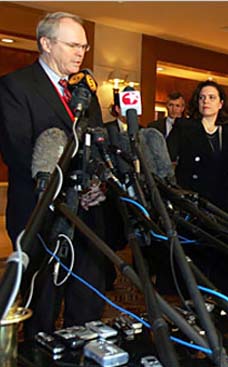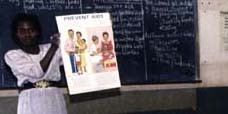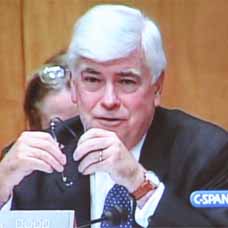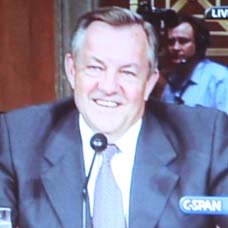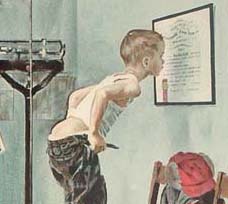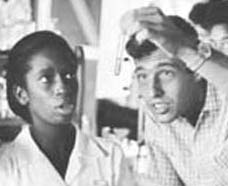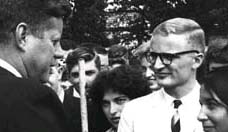
When Shawn Raymond and Chris Myers Asch finished their two-year Teach For America assignments, they weren’t ready to leave public education behind. With little capital and lofty aspirations, the two started the nonprofit Sunflower County Freedom Project, which provides after-school mentoring and academic tutoring to hundreds of low-income students. Raymond, a Houston lawyer, and Asch, 33, executive director of the Sunflower Country Freedom Project, determined there was a need for a centralized public service academy after noticing a post-9/11 spike in student interest in social service projects. Raymond said both he and Asch could afford to live on a teacher’s salary while in Teach For America, but that many students emerge from college with major loans. “The problem is that so many kids are priced out of doing the kind of things that are good for our country because they owe so much money by the time they are done,” Raymond said. “Our point is, why not prioritize service and make the opportunities available to everyone.” That translates into what Raymond and Asch hope would be a four-year, all-expenses-paid education, courtesy of the federal government. They estimate the annual operating budget to be about $205 million (based on calculations that the median per student expenditure at state universities is about $40,000 each year).
Pitching a Public Service Academy
Pitching a Public Service Academy
They were idealistic 20-somethings with degrees from private East Coast colleges. They met one summer in Sunflower County, Miss., lived and worked together in that rural community and forged a friendship that has lasted a decade.
When Shawn Raymond and Chris Myers Asch finished their two-year Teach For America assignments, they weren’t ready to leave public education behind. With little capital and lofty aspirations, the two started the nonprofit Sunflower County Freedom Project, which provides after-school mentoring and academic tutoring to hundreds of low-income students.
Now, Raymond and Asch are thinking on an even bigger scale, laying the groundwork for a civilian leadership institution modeled after the military service academies. The propsed university, called the United States Public Service Academy, would provide a free education to roughly 5,100 undergraduates from across the country interested in becoming future leaders in public service fields. And the potentially long odds of winning Congressional support haven’t daunted the organizers.
“This is not going to be a traditional college,” Raymond, 34, said. “This is going to be intense – a nine-year all-in commitment.”
Students would be required to spend five years after graduation working in the public or nonprofit sectors – be it in local, state or federal government, law enforcement, education or public health.
Raymond, a Houston lawyer, and Asch, 33, executive director of the Sunflower Country Freedom Project, determined there was a need for a centralized public service academy after noticing a post-9/11 spike in student interest in social service projects.
William Galston, a former aide to President Clinton who is now a senior fellow in governance studies at the Brookings Institution, said he agrees with Raymond that there is a “sense of optimism among this generation of students we haven’t seen in recent years.
“A number of organizations have noted that people who surged into public service jobs are preparing to retire en masse,” Galston added. “There’s a lot of worry on every level about how we should be replacing these people with similarly qualified and dedicated individuals.”
Raymond said both he and Asch could afford to live on a teacher’s salary while in Teach For America, but that many students emerge from college with major loans. “The problem is that so many kids are priced out of doing the kind of things that are good for our country because they owe so much money by the time they are done,” Raymond said. “Our point is, why not prioritize service and make the opportunities available to everyone.”
That translates into what Raymond and Asch hope would be a four-year, all-expenses-paid education, courtesy of the federal government. They estimate the annual operating budget to be about $205 million (based on calculations that the median per student expenditure at state universities is about $40,000 each year).
Experts say the organizers could face an uphill battle convincing Congress to fund their institution. “This is not a great time to be proposing something so monumental given the other economic realities in the country,” said Sarah Jane Rehnborg, a consultant with the RGK Center for Philanthropy and Community Service at the LBJ School of Public Affairs at the University of Texas at Austin.” Galston said the proposal in its current form faces financial roadblocks, but that “it’s certainly not impossible that people in Congress could be induced to support it.”
Raymond and Asch are in the early stages of reaching out to potential donors and have yet to make an official pitch to Congress. They have formed a board of advisors and have drafted a 15-page project proposal that outlines some structural details. Students would be accepted to the program following a Congressional nomination, similar to the military academy process. Raymond said states would be guaranteed a certain number of spots based on their overall population.
Parts of the curriculum would look similar to a traditional liberal arts program, with graduates earning a bachelor of arts or bachelor of science degree. There are also service-oriented components to the education. Each summer, students would be enrolled in a different structured learning program (emergency response training and an armed forces internship, for instance). They would likely major in a traditional subject and be required to take courses in foreign languages and international relations – all in preparation for a junior year abroad. Raymond said he would like to see students choose a public service concentration – such as health care, education or law enforcement – and serve in that field after graduation. The current plan calls for the university to place graduates in jobs based on the students’ areas of interest and on regional employment needs.
Galston said the service academy proposal will lead public officials to ask important questions about what type of curriculum and training ought to be mandatory for the next generation of public servants.
Some argue that existing public affairs programs at colleges across the country already prepare students for public service careers. Rehnborg, a lecturer in UT-Austin’s public affairs program, said the proposed academy is unique because of its centralized model. “There’s a whole issue of camaraderie and shared dedication and a chance for this to become a think tank for national issues,” she said.
Still, Rehnborg said she has mixed feelings about the proposal. She said she is concerned that by redistributing the most civic-minded students to one institution, other campuses will lose key members of their communities.
Galston said it makes sense for the organizers to model their institution after the service academies, which he said have worked for years in developing passionate student leaders. Rehnborg said she wonders if there is model that would better accommodate students. “Let’s be innovative in design,” she said. “My biggest concern is that the [military service academy] design has been around for 200 years, and we’re applying it to a new set of issues.”
Raymond said Washington would be a likely location for the university, and that building a coalition of supporters both in Washington and across the country is the next step. “I don’t think anyone is going to say, ‘I’m not for public service,’ ” he said. “There will always be naysayers, but I firmly believe it’s good for us to prioritize this.”







